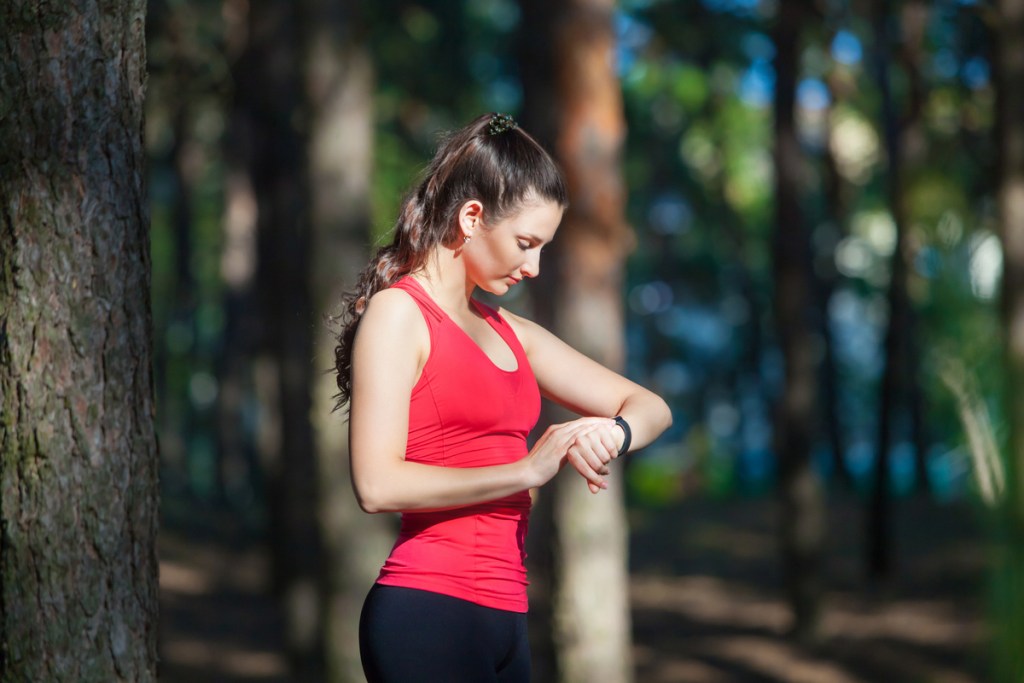Along with the Fitbit has come a regeneration of the classic fitness benchmark: 10,000 steps a day. It’s a nice round number and a nice round goal. However, science didn’t arrive at that number — marketing did. In 1965, a Japanese company launched a pedometer named, in English, the “10,000-step meter,” which I-Min Lee, a professor of medicine at Harvard Medical School, explains didn’t have a basis in a scientific study.
Taken together, 10,000 steps equals roughly five miles and burns anywhere from 2,000 to 3,500 calories per week, according to data from Fitbit. While 10,000 steps is a worthy objective and a great way to get moving, it’s not a one-size-fits-all proposition and may not be enough to accomplish all of your health and fitness goals on its own.
Benefits of walking
There’s more than one way to get your steps in, but a lot of people rely on walking to pump up their numbers. While it’s a relatively simple endeavor, walking is actually a terrific form of exercise, with benefits including:
- Decreased risk of heart disease
- Lower body fat
- Boosted immune system
- Protection against neurodegenerative conditions like dementia
- Stronger bones
- Lower blood pressure and cholesterol
- Improved control of blood sugar
The CDC doesn’t call for a certain number of steps per day, but instead recommends that adults get 150 minutes of moderate-intensity activity per week as well as two or more days of muscle-strengthening activity.
There is nothing wrong with striving to reach 10,000 steps daily. However, this isn’t a magical threshold that will singlehandedly resolve all your fitness challenges. On top of encouraging weight loss, keeping your body moving throughout the day is a boon to your general health. However, you still have to maintain a balanced diet, drink water, and keep your mind stimulated in order to achieve overall wellness.

Are 10,000 steps really necessary?
A 2019 study published in JAMA Internal Medicine found “a limited scientific basis” for the 10,000-step threshold. The authors noted that mortality rates decreased among women who walked up to 4,400 steps per day compared with those who took 2,700 steps per day. However, health benefits leveled out at the 7,500-step mark, suggesting 10,000 steps a day may not be necessary.
Rather than being based in science, people outside of the medical or fitness communities are the main perpetrators of the 10,000-step threshold. Authors of the 2019 study wrote: “A common goal of 10,000 steps per day has been perpetuated by the lay press and is often used as the default by software programs on wearables and smartphones.”

What should I do instead?
One limitation of some versions of the FitBit is their inability to account for exercises like cycling or swimming where steps are not a part of the equation. These also happen to be effective exercises that diversify your physical activity portfolio and prevent you from growing bored with your routine.
Sports medicine physician Dr. Jordan Metzl recently indicated that a heart-rate monitor, instead of a pedometer like Fitbit, can be a more flexible tool that provides a more well-rounded picture of your physical activity. Some Fitbits do track heart rate, but not nearly as accurately as a dedicated heart rate monitor.
There are plenty of exercise options regardless of your fitness level, illustrating that it’s okay to keep 10,000 steps as a general guideline rather than a universal goal. Long story short, the most important thing is to keep your body moving and engage in whatever exercise works best for you and your lifestyle. If that’s taking 10,000 steps a day, then go for it!
BlissMark provides information regarding health, wellness, and beauty. The information within this article is not intended to be medical advice. Before starting any diet or exercise routine, consult your physician. If you don’t have a primary care physician, the United States Health & Human Services department has a free online tool that can help you locate a clinic in your area. We are not medical professionals, have not verified or vetted any programs, and in no way intend our content to be anything more than informative and inspiring.




